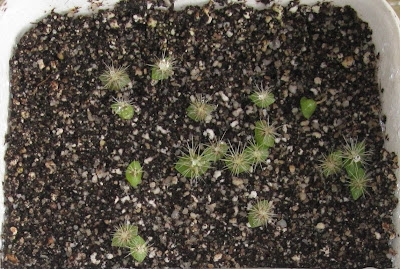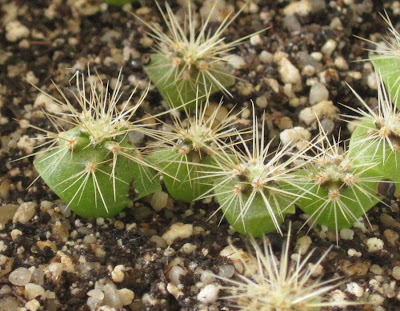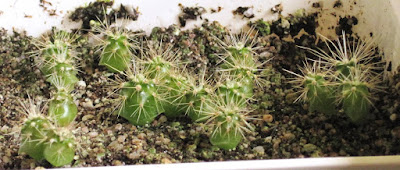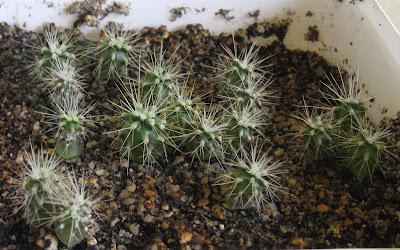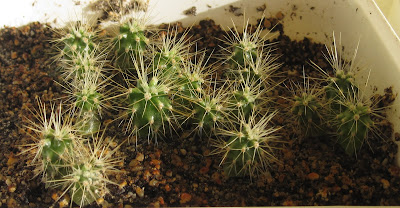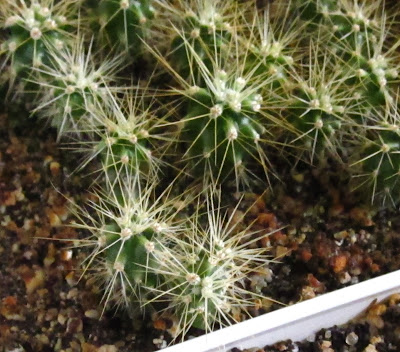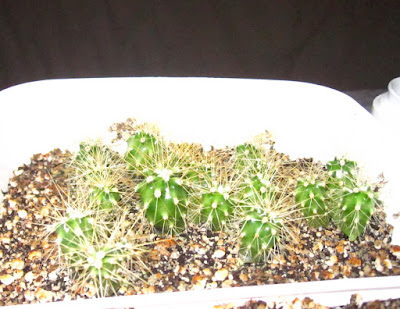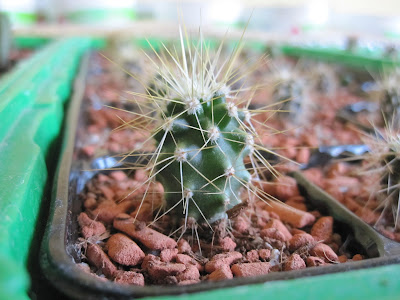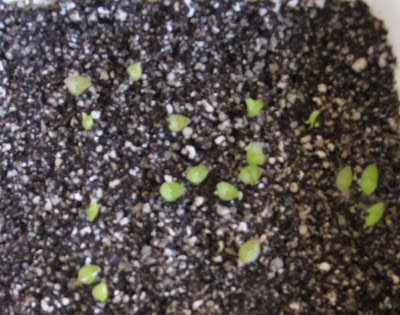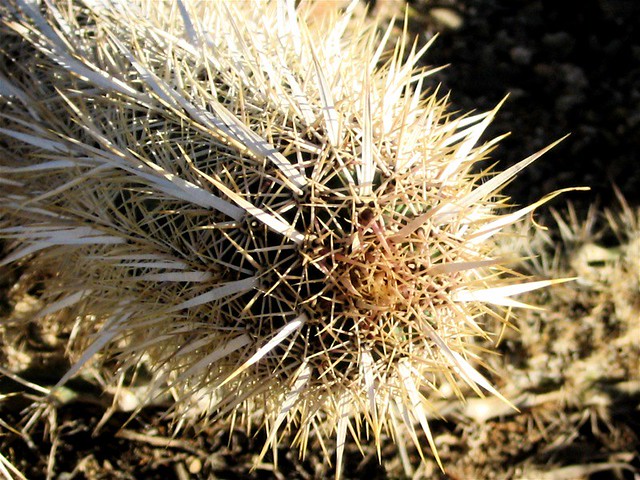Today I'm going to write about the Selenicereus cactus, a species named after Selene, the Greek Goddess of the moon. This sprawling cactus can be found in parts of the Caribbean and Central America in it's 'junglish' type of habitat. In cultivation, this family can be kept much more moist than 'normal' cacti and there's another thing; they can't stand cold and like to grow in half-shadowed places.
The Selenicereus family is really huge! I'm not sure about the exact number, but I guess there are around thirty subspecies (without counting all the varieties). And don't worry. I won't name them all here, but if you would like to have an impression, check
THIS page on Cactiguide.com. I'll just write a little bit about the following subspecies; S. grandiflorus, S. pteranthus and S. hondurensis. All three of them are close related but the equality of S. grandiflorus and S. pteranthus is bigger.
When flowering, all the members have large white flowers that only open in the late evening, just for a couple of hours, close around midnight and die-off in the morning. They'll leave a strong odour that smells more or less like vanilla. A couple of them are named 'Queen of the night' because of this, but the most famous member is Selenicereus grandiflorus.
Selenicereus grandiflorus
Famous as she is, she's also kind of rare in cultivation. There are a lot of hybrids and wrong identified species sold under this name. I do hope to possess the true S. Grandiflorus, but who knows?!
S. grandiflorus can be described as a sprawling and climbing plant with a diameter of +/- 3 centimetre and soft/hairy spines with the size of 1 to 4 millimetre. The flowers can reach a size of 25 cm and when opened entirely, up to 30cm in width.
Another short note; the flowers and younger parts were once used as a medicine because they're supposed to contain cardiac glycosides, which may be in a treatment of congestive heart failure and cardiac arrhythmia.
 |
| Selenicereus grandiflorus, taken from the WWW |
What more to say about this 'Queen of the night'? She's sprawling and Climbing. Her branches can reach a length of +/- 5 metre and she really goes everywhere where you don't want her to go! It's hard to keep her under control, but who am I to tell you to keep this plant only in a greenhouse and not in your living room?! She needs space... A lot of space! And slowly (relatively, but comparing to other cacti you can call it quick!) she'll turn your place into a jungle. Another interesting thing to tell you is that this plant has aerial roots all over which will turn into normal roots at the moment they find a place to root.
Now let me show you today's state of my S. grandiflorus seedlings.
 |
| Selenicereus grandiflorus, 3 months old |
I've sown them at April the 1st, this year, which means that on the photo above, they have an age of 3 months. If you're interested in their entire progress from seed till what they're right now, you can visit their album over
HERE.
Selenicereus pteranthus
Now I have another story for you. I'm not sure if I should be proud or ashamed of it (those damn moral dilemmas! Different in every culture and even for every single person, religious or not. Shut up! No philosophy right now.).
One day... I was at a 'place' where they had a desert-garden inside. Very nice and a lot of cacti around. So there was this huge sprawling Selenicereus pteranthus on the floor, which looked like a real plague. I was kind of fascinated by it and not planning to do anything, but then I saw one little piece laying broken-off on the floor and thought... Hmm... That looks like a ready-to-go cutting! Should it be a problem if I? Uhhmmmm....
 |
| Selenicereus pteranthus |
So this is the cutting I've 'lent'. Don't worry. I won't steal your furniture when you invite me to your birthday party! Please continue reading this article and you'll start to think of me as a nice guy again. I'll make this moral issue straight at the end of this article.
I've just checked the day when I've s... burrowed this cutting and found out that it was less than a year ago. After being potted, this cutting first developed its aerial roots into normal roots, a process that took a couple of months. Than it started to grow and... grow and grow!
 |
| Selenicereus pteranthus, Echinopsis subdenudata and Weberbauerocereus johnsonii. | |
The photo above was taken in may 2012, so not that long ago. Now look at what it has turned into!
 | | | |
| Selenicereus pteranthus |
Keep in mind that on this last photo, the huge branch on top has a length of 55cm and an average diameter of 1,5cm. By the way, this photo was taken today, July the 7th, 2012, which means that this plant has grown almost 30cm in less than two months. Ouch! The parts of this plant will become 3 to 5 centimetre in diameter, will have around 5 ribs and spines that are more conical with an average length of 3 to 4 millimetre.
A lot of people only grow this specie to graft on it. (
Cactiguide's article on grafting, for those who don't have a clue of what grafting is) I understand why... It's thin, comparing to other cacti and it's a quick grower, so it will have a nice effect on the cactus you're grafting on top of it. Who knows I'll try it out one day, but the main reason why I grow this plant is because I think it's pretty and funny at the same time. Also chaotic. Yeah, Chaotic! That's a great word for this plant. Chaos can be beautiful (in my opinion) and to be honest (and I suggest you to do the same), who are we to decide what chaos is? Just because we don't understand something doesn't mean that it doesn't contain a plan and isn't organized. Anyway, this plant might give the impression of chaos and it will be chaotic for you! Another train of thoughts here...
Selenicereus hondurensis
A little similar in its way of growing, but with a different appearance. This cousin of the ones I've named above has a more hairy look. I couldn't find much information about this one and the only description I can give is based on one photo in black and white and that's it:
I can't tell much more about S. hondurensis than you can see here. I guess it has more ribs than the ones I've named above and have a more hairy appearance. More about it later, because guess what? I'm growing this one!
 |
| Selenicereus hondurensis, 3 months old |
Have a nice day!
And then I have a message for those who are close to me. Be prepared, because one day you'll receive one as a present!
Ow! I've promised to tell about how I'm going to make things straight with the garden where I've burrowed a broken-off part Selenicereus pteranthus... Well... My S. pteranthus will grow really big within some years. Next time when I go there, I'll bring a cutting of this plant and drop it at the same spot where I've taken my cutting. My soul will be cleansed!
Have a nice day and don't forget to come back here once in a while!

